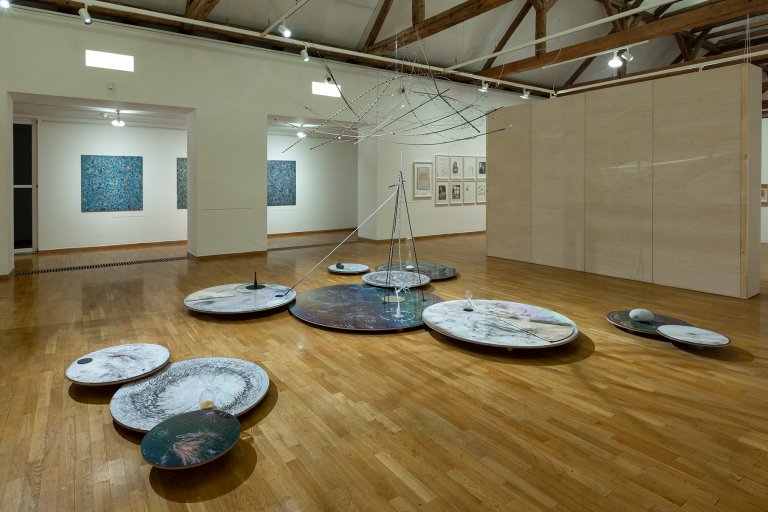Universum / SEFO 2021 Triennial

The main exhibition of the SEFO 2021 Triennial presents a group of artists from the broader Central European region whose work repeatedly addresses the issues of the determination, naming, composition, organisation and meaning of the elements making up the world we inhabit. Rather than by topic or approach and definitely not by the medium in which they work, these individuals are united by a way of thinking, their use of basic definitions and polarities that we employ to help us on the path to understanding. The human world is paradoxical: the more it longs for unity and wholeness, the more it creates dividing lines and barriers. The tension between what is inside and what we consider our own and what is outside and belongs to everyone, so to speak, is considerable and also critical for our own self-perception.
The Universum exhibition is cyclical – its beginning and end are linked to the monographic exhibition of Jan Pamułas work. Uršula Berlot-Pompe, Zdeněk Trs, Jaroslav Grulkowski and even Lubomír Axmann represent the seeming transparency of a logical system, the technically accurate visualisations of its structure. While it would be convenient to understand chaos as its direct opposite, far more subversive are marginal positions or pseudo-systems that use credible mechanisms and established strategies, slightly misinterpreted to make them more pliable. But the more we bend the idealised objective system to our needs and possibilities, the more we betray it. Examples of this subtle yet fundamental shift are the work of Jana Gunstheimer, Áron Kútvölgyi-Szabó, Agata Gertschen, Ondřej Přibyl, Joanna Leszczyńská and Adam Kokesch, which are all the more impressive because they work with “traditional” media and practices.
Continuity, the universality of the process of cognition and the formulation of ones own arguments or findings are a topic pursued by Nikolaus Gansterer. He also represents the centre of the spectrum – in a tradition in which, at least on a personal level, we follow the Renaissance idea of a centralised universe, in the middle of which stands man, not only as its recipient, but also as a reciprocally creative agent. The importance of the installation’s meaning is enhanced by the technique the artist adopts – drawing.
The oscillation around this ever-changing focus then includes other artists, including those trying to recreate the moment of experience with what is, what serves for direct touch or view, e.g., Gábor Koós, Karol Pomykała and Adam Albert. At the same time, they transcend the boundaries of the real, or the virtual, the possible, and show the great importance of storytelling, the story we share and the language we use to relate it. At the same time, they demonstrate the most important thing, i.e., that facts are established on the basis of a common culture, not the other way around. And that art permanently and constantly reveals what it means to create reality.
In this constellation, the “universum” is a pliable structure. It is not complete or all-embracing. Its skeleton is human experience with the world – non-factual, complex and variable. What we share is a system of fixed points, and what makes it exceptional is what lies in between.
exhibition | The SEFO 2021 Triennial of Contemporary Central European Art
date | Jun 24, 2021 – January 2, 2022
chief curator | Barbora Kundračíková
curators | Šárka Belšíková, Štěpánka Bieleszová, Ladislav Daněk, Martin Fišr, Jakub Frank, Martina Mertová, Gina Renotière,Olga Staníková, Helena Zápalková
production | Petr Dvořák, Alexandr Jeništa, Pavlína Wolfová
education | Tereza Čermáková, David Hrbek, Hana Lamatová, Marek Šobáň
architectural design | Michal Soukup
installation | Daniel Opletal, Vlastimil Sedláček, Filip Šindelář
technical support | Radek Látal, Petr Nosál, Dušan Sapara
visual identity | Beata Rakowská
graphic design | Petr Šmalec, Vladimír Vaca
translation | Barbora Boráková, David Gaul, Zuzana Henešová